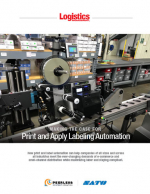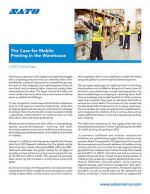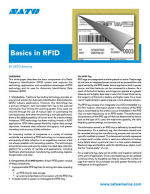The Technology and Applications Behind RFID
This white paper describes the basic components of a Radio Frequency Identification (RFID) system and explores the technology, applications, and competitive advantages of RFID technology and its uses for Automatic Identification Data Collection (AIDC).
Traditional bar-coding technology provides an economical solution for Automatic Identification Data Collection (AIDC) industry applications.
However, this technology has a primary limitation: each barcoded item has to be scanned individually, thus limiting the scanning speed.
Extra costs are incurred through the use of manual labor or automating the canning process. And when the scanning is manually performed, there is the added possibility of human error.
As a result of these limitations, RFID technology has been making inroads in AIDC applications. RFID offers greater flexibility, higher data storage capacities, increased data collection throughput, and greater immediacy and accuracy of data collection.
An increasing number of companies in a variety of markets worldwide are embracing RFID technology to increase the quality and quantity of data collection in an expeditious manner, a feat not always possible with barcoding systems.
The technology’s enhanced accuracy and security make it an ideal data collection platform for a variety of markets and applications, including healthcare, pharmaceutical, manufacturing, warehousing, logistics, transportation, and retail.
Components of an RFID System
A basic RFID system consists of these components:
- A programmable RFID tag/inlay for storing item data consisting of:
- An RFID chip for data storage
- An antenna to facilitate communication with the RFID chip
- A reader/antenna system to interrogate the RFID inlay
What’s Related




Favorites





